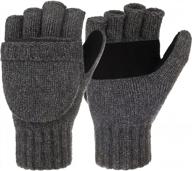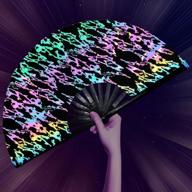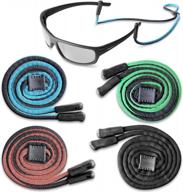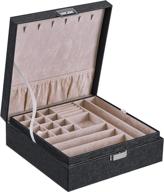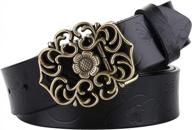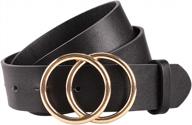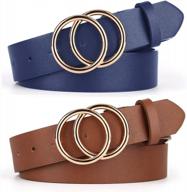Another interesting products
The Power of the Belt - Why This Accessory Makes or Breaks Your Look
A belt may seem like a minor afterthought when getting dressed, but it has the capacity to pull together or completely disrupt an outfit. The right belt turns a basic pair of jeans and a tucked-in shirt into a polished ensemble. It gives shape and proportion to baggy dresses and oversized sweaters. But choose the wrong belt, and suddenly your look goes from refined to sloppy.
Belt Basics
Belts serve both aesthetic and functional purposes:
- Cinch in waist on loose garments
- Create feminine hourglass figure
- Add visual interest with color, texture
- Make pants fit properly
With endless options from skinny leather to chunky chains, selecting the optimal belt requires considering:
- Occasion - Formal events call for simpler belts than casual everyday wear
- Outfit - Match leather with leather, metals with metals, and aim for complimentary colors
- Body Type - Thin belts suit straight figures while wider belts work for curvier bodies
- Comfort - The belt should fit snugly without squeezing or sagging
Belt Styles for Every Look
From the office to date night, the proper belt transforms an outfit. Consider these examples:
| Occasion | Belt Recommendation |
|---|---|
| Business formal | Thin black leather belt with subtle buckle |
| Day at the office | Classic brown leather belt coordinating with shoes |
| Casual weekend | Canvas belt in a fun color or pattern |
| Cocktail party | Metallic chain or rhinestone embellished belt |
| Date night | Black or red leather belt with interesting buckle detail |
Belts for women's fashion serve both aesthetic and functional purposes. With some consideration of the occasion and entire look, belts can take an outfit from dull to dazzling.
The Evolution of the Belt: Form and Function intertwined
Belts have been around for centuries, serving the dual role of keeping clothes in place while accentuating the wearer's waist. Their design and purpose have transformed over time along with fashion.
Similar products
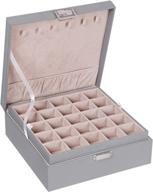

58 Review

Ancient Belts: Utility Meets Decoration
- Belts date back to the Bronze Age to hold clothing together
- Intricate metal buckles added ornamental flair
- Belts showed status and wealth
For men:
- Romans - thick leather belts secured tunics
- Middle Ages - belts displayed swords and pouches
For women:
- Cinched waists of medieval gowns
- Renaissance girdles flattened stomachs
1800s: Rise of the Waist Belt
- High-waisted Regency styles needed belts for support
- Victorian corsetry used belts to enhance hourglass shape
| Decade | Key Belt Styles |
|---|---|
| 1810s | Knotted sashes |
| 1820s | Wide ribbons |
| 1830s | Leather belts accentuate tiny waists |
1900s: Sporting and Casual Belts Emerge
- Rise of pants for women requires new belt styles
- Increased leisure time leads to casual belts
Belts evolved from purely functional ties for clothing to fashionable accessories. Their history reflects the changing styles and roles of men and women over the centuries.
Troubleshooting Your Belt Woes: Fixes for the Frustrations
Belts can present plenty of problems, from broken buckles to stretched out holes. But with some clever solutions, you can save your favorite belt and avoid future frustrations.
Thesis Statement
While ill-fitting, damaged, or improperly cared for belts can be annoying wardrobe malfunctions, there are simple, inexpensive do-it-yourself solutions for the most common belt issues that will extend the life of your belts and restore them to working order.
Top products in 👩🏻🦰 Women's Belts
Problem: Broken or Damaged Buckle
- Remove broken buckle with pliers
- Replace with buckle from craft store, thrift store belt, or order a replacement online
- Use awl to create new hole if needed
Problem: Holes Stretched From Wear
- Select buckle hole 1-2 holes smaller for tighter fit
- Punch new hole with leather hole puncher for better positioning
- Apply clear nail polish to strengthen hole edges
Problem: Scuffed Leather
- Clean with mild soap and water
- Apply leather conditioner to hydrate and smooth scuffs
- Use furniture wax on small scratches
Problem: Difficulty Inserting Prong in Belt Loop
- Rub prong tip with bar soap to lubricate
- File down rough edges with nail file or sandpaper
- Widen belt loop opening with scissors if too tight
With a few basic tools and inexpensive supplies, you can revive and repair your belt to extend its use. Proper care and maintenance will also prevent many common belt frustrations.
How to Select the Perfect Belt for Your Body and Style
With so many options for materials, colors, widths, and buckles selecting the ideal belt may seem daunting. Consider these key factors to find a belt that flatters your figure and enhances your outfits.
Determine Your Needs
First decide how you will primarily wear the belt:
- Everyday casual outfit accessorizing
- Dressy formal occasion
- Utility for sports or work uniforms
- Making loose clothes fit better
Choose Width Based on Body Type
| Body Type | Belt Width |
|---|---|
| Straight, athletic | Thinner belts around 1"-1.5" wide |
| Curvy, pear shaped | Wide belts 2"-3" wide |
| Plus size | Medium width around 1.5"-2" wide |
Select Material for Style and Comfort
- Leather - sleek, polished; needs occasional conditioning
- Fabric - casual; prone to stretching over time
- Metal - edgy; can be cold and require cleaning
Choose Complimentary Colors and Patterns
- Solid brown or black leather for versatile neutral
- Matching leathers for a coordinated look
- Fun colors and prints for casual style
The right belt highlights your best assets and completes a stylish outfit. Follow these tips to find a belt that is both fashionable and functional.
"How To Choose The Right Size For Women's Belts"
Choosing the right size for women's belts can be a daunting task, but there are some easy ways to measure at home. Here are some tips to help you find the perfect fit for your belt:
What Are Some Common Belt Materials For Women??
Belts are a versatile accessory that can add style and functionality to any outfit. Here are some common materials used for women's belts:
How To Wear A Belt Female?
Belts are a versatile accessory that can add shape and style to any outfit. Here are some tips on how to wear a belt for women:







